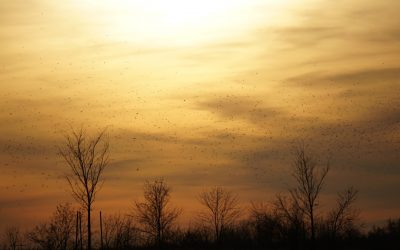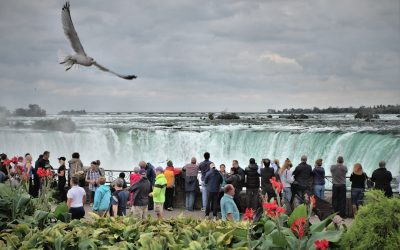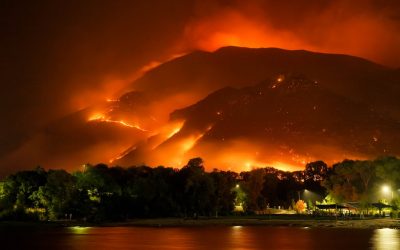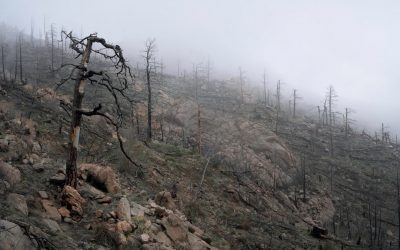World Geography
Geography is the study of the Earth’s landscapes, environments, and the relationships between people and their surroundings. It encompasses both the physical aspects of the Earth, such as its landforms, bodies of water, and climate, as well as the human aspects, including population distribution, cultures, and economies. World geography is a broad field that seeks to understand the complexities of our planet and how humans interact with it. By studying world geography, we can gain a deeper appreciation for the diversity of our planet and the interconnectedness of its various regions.
Geography is a multidisciplinary field that draws on elements of physical science, social science, and humanities. It involves the use of maps, spatial analysis, and geographic information systems (GIS) to understand the Earth’s surface and the processes that shape it. World geography also encompasses the study of human geography, which examines the ways in which people and their activities are distributed across the Earth. By understanding world geography, we can better appreciate the environmental, cultural, and economic challenges facing different regions of the world. This knowledge is crucial for addressing global issues such as climate change, resource management, and international development.
The Five Oceans and Seven Continents
The Earth’s surface is divided into five major oceans: the Pacific, Atlantic, Indian, Southern (or Antarctic), and Arctic Oceans. These vast bodies of water play a crucial role in regulating the Earth’s climate and supporting diverse marine ecosystems. The oceans also serve as important transportation routes and a source of food and other natural resources for human societies around the world.
In addition to the oceans, the Earth’s landmasses are divided into seven continents: Africa, Antarctica, Asia, Europe, North America, Australia (or Oceania), and South America. Each continent has its own unique physical and cultural characteristics, shaped by millions of years of geological processes and human history. From the deserts of Africa to the rainforests of South America, the continents offer a rich tapestry of landscapes and environments for exploration and study.
Major Mountain Ranges and Deserts
The Earth’s surface is also marked by major mountain ranges and deserts that have shaped the planet’s physical and cultural landscapes. The Himalayas, for example, are the highest mountain range in the world and are home to diverse ecosystems and cultures in countries such as India, Nepal, and Bhutan. The Andes in South America, the Rockies in North America, and the Alps in Europe are other prominent mountain ranges that have influenced human settlement patterns and economic activities.
Deserts cover about one-third of the Earth’s land surface and are characterized by low precipitation and extreme temperatures. The Sahara Desert in Africa is the largest hot desert in the world, while the Gobi Desert in Asia is one of the largest cold deserts. Deserts are not only home to unique flora and fauna but have also been important trade routes and cultural crossroads throughout history.
Climate Zones and Biomes
The Earth’s climate is influenced by a variety of factors, including latitude, altitude, ocean currents, and prevailing winds. As a result, the planet is divided into different climate zones, each with its own characteristic weather patterns and ecosystems. The equator, for example, experiences a tropical climate with high temperatures and heavy rainfall, while the polar regions have a cold and dry climate.
These climate zones give rise to different biomes, or large ecological areas characterized by distinct plant and animal communities. The tropical rainforest biome, found near the equator, is home to a diverse array of species and is vital for regulating the Earth’s climate. The grasslands biome, found in regions such as the African savannah and North American prairies, supports grazing animals and has been important for human agriculture throughout history.
Human Geography and Population Distribution
Human geography examines the ways in which people and their activities are distributed across the Earth’s surface. It encompasses topics such as population growth, migration patterns, urbanization, and cultural diversity. Understanding human geography is crucial for addressing global challenges such as poverty, inequality, and environmental degradation.
Population distribution is uneven across the world, with some regions experiencing rapid population growth while others are declining. The majority of the world’s population lives in Asia, particularly in countries such as China and India. Urban areas are also growing rapidly, with more than half of the world’s population now living in cities. This trend has significant implications for infrastructure development, resource management, and social inequality.
Historical and Cultural Geography
Historical geography examines how human activities have shaped the Earth’s landscapes over time. It explores topics such as colonialism, trade routes, and the rise and fall of empires. Cultural geography focuses on how human cultures have developed in different regions of the world and how they interact with their environments.
The Silk Road, for example, was an ancient trade route that connected China with Europe and facilitated the exchange of goods, ideas, and technologies across Eurasia. This historical trade route had a profound impact on the development of cultures and economies along its path. Similarly, cultural geographers study how different societies have adapted to their environments through practices such as agriculture, architecture, and religious beliefs.
The Importance of Geographic Knowledge
Geographic knowledge is crucial for addressing global challenges such as climate change, resource management, and international development. By understanding world geography, we can better appreciate the environmental, cultural, and economic challenges facing different regions of the world. This knowledge is crucial for addressing global issues such as climate change, resource management, and international development.
Geographic knowledge also helps us to understand our interconnectedness with other regions of the world. By studying world geography, we can gain a deeper appreciation for the diversity of our planet and the interconnectedness of its various regions. This understanding can foster a sense of global citizenship and empathy for people from different cultures and backgrounds.
In conclusion, world geography is a complex and multifaceted field that encompasses both physical and human aspects of the Earth’s landscapes. By studying world geography, we can gain a deeper appreciation for the diversity of our planet and the interconnectedness of its various regions. This knowledge is crucial for addressing global challenges such as climate change, resource management, and international development. It also helps us to understand our interconnectedness with other regions of the world and fosters a sense of global citizenship.
FAQs
What is world geography?
World geography is the study of the Earth’s landscapes, environments, and the relationships between people and their environments. It encompasses the physical features of the Earth, as well as the human activity that takes place on it.
Why is world geography important?
World geography is important because it helps us understand the world around us. It provides insights into the physical and human processes that shape our planet, and helps us make informed decisions about how to interact with our environment.
What are the main branches of world geography?
The main branches of world geography include physical geography, which focuses on the Earth’s natural features and processes, and human geography, which examines the relationships between people and their environments.
How does world geography impact our daily lives?
World geography impacts our daily lives in numerous ways, from influencing the weather and climate we experience, to shaping the availability of natural resources and influencing the distribution of populations and cultures around the world.
What are some key concepts in world geography?
Key concepts in world geography include location, place, human-environment interaction, movement, and region. These concepts help geographers understand and interpret the world around them.
Kansas
Kansas, also known as the Sunflower State, is located in the Midwestern region of the United States. It is bordered by Nebraska to the north, Missouri to the east, Oklahoma to the south, and Colorado to the west. With a total area of 82,278 square miles, Kansas is the 15th largest state in the country. Despite its relatively small population compared to other states, Kansas plays a significant role in the United States both historically and economically. Summary Kansas is a state located in the Midwestern region of the United States. The state is known for its flat terrain, prairies, and wheat fields. Kansas has a rich history, including its role in the Civil War and as a major stop on the Santa Fe Trail. The economy of Kansas is largely based on agriculture, with wheat, corn, and soybeans being major crops. Notable landmarks and attractions in Kansas include the Tallgrass Prairie National Preserve, the Kansas State Capitol, and the Dwight D. Eisenhower Presidential Library and Museum. Geographical features of Kansas Kansas is characterized by its vast plains and rolling hills. The state has a diverse topography, ranging from flat prairies in the east to rugged hills and canyons in the west. The eastern part of Kansas is part of the Great Plains region, while the western part is part of the High Plains. The climate in Kansas varies from humid continental in the east to semi-arid in the west. Kansas is rich in natural resources, including oil, natural gas, coal, and limestone. The state is also known for its fertile soil, making it an ideal location for agriculture....
Iowa
Located in the heartland of the United States, Iowa is a state that often flies under the radar. However, this Midwestern gem has a rich history, diverse geography, and a thriving economy that make it a significant player in the country. Known as the “Hawkeye State,” Iowa is home to rolling hills, fertile farmland, and the mighty Mississippi River. With its strong agricultural industry, top-ranked universities, and vibrant arts and culture scene, Iowa has something to offer everyone. Summary Iowa is known as the Hawkeye State and has a rich history dating back to Native American settlements. The state is home to rolling hills, the mighty Mississippi River, and is known as the Corn Belt of America. Iowa is home to top-ranked universities and colleges, including the University of Iowa and Iowa State University. Sports fans can enjoy Hawkeye football and other athletic events, while arts and culture enthusiasts can celebrate the state’s heritage. Visitors can discover hidden gems and must-see attractions in Iowa, while the state’s diverse economy and thriving small businesses offer opportunities for growth and development. History of Iowa: From Native American Settlements to Statehood Before European settlers arrived, Iowa was home to various Native American tribes, including the Meskwaki and Sauk. These tribes lived off the land, hunting buffalo and farming the fertile soil. In the early 1800s, European settlers began to move into the area, leading to conflicts with the Native Americans. The Black Hawk War of 1832 was a significant event in Iowa’s history, as it marked the end of Native American resistance in the region. Iowa became a territory in 1838 and...
Indiana
Indiana, also known as the Hoosier State, is a state located in the Midwestern region of the United States. It is bordered by Michigan to the north, Ohio to the east, Kentucky to the south, and Illinois to the west. With a population of over 6 million people, Indiana is the 17th most populous state in the country. The capital and largest city of Indiana is Indianapolis. Summary Indiana is a state located in the Midwest region of the United States. The climate in Indiana is characterized by hot summers and cold winters. Indiana has a rich history dating back to pre-colonial times, with significant contributions to the Underground Railroad and the Civil War. The economy of Indiana is diverse, with agriculture, manufacturing, and services being major industries. Indiana is known for its vibrant culture and society, with a thriving arts scene, music festivals, and sports teams. The Geographical Location and Climate of Indiana Indiana is situated in the eastern part of the Midwest region of the United States. It covers an area of approximately 36,418 square miles, making it the 38th largest state in terms of land area. The state is characterized by its diverse geography, with rolling hills in the southern part and flat plains in the northern part. Indiana experiences a humid continental climate, with hot summers and cold winters. The average temperature in July, the hottest month, ranges from 75°F (24°C) in the north to 80°F (27°C) in the south. In January, the coldest month, temperatures can drop to an average of 20°F (-7°C) in the north and 25°F (-4°C) in the south. The state...
Illinois
Illinois, also known as the Prairie State, is a state located in the Midwestern region of the United States. It is the sixth most populous state in the country, with a population of over 12 million people. Illinois is bordered by Indiana to the east, Kentucky to the southeast, Missouri to the west, and Wisconsin and Iowa to the north. Its capital is Springfield, while its largest city is Chicago. Summary Illinois is known as the Prairie State due to its vast grasslands and prairies. The state has a rich history dating back to Native American settlements and has played a significant role in modern times. Illinois has a diverse geography and climate, ranging from flat prairies to rolling hills and humid summers to cold winters. The state’s economy is driven by agriculture, industry, and trade, with Chicago being a major hub for commerce. Illinois has a strong education system, with top-ranked universities and colleges, as well as excellent public and private schools. History of Illinois: From Native American Settlements to Modern Times The history of Illinois dates back thousands of years, with evidence of Native American settlements in the region as early as 10,000 BC. The area was inhabited by various tribes, including the Illiniwek and Miami, before European colonization began in the 17th century. The French were the first Europeans to explore and settle in Illinois, establishing trading posts and forts along the Mississippi and Illinois rivers. In 1763, after the French and Indian War, Illinois came under British control. However, it was soon ceded to the newly formed United States after the American Revolution. Illinois became...
Idaho
Idaho, known as the “Gem State,” is located in the northwestern region of the United States. It is bordered by six states: Montana to the east, Wyoming to the northeast, Nevada and Utah to the south, Oregon to the west, and Washington to the northwest. With a population of over 1.7 million people, Idaho is the 39th most populous state in the country. Despite its relatively small population, Idaho is known for its diverse geography, rich history, and thriving industries. Summary Idaho is known as the Gem State of America. Idaho has a diverse landscape and climate, ranging from mountains to deserts. Idaho has a rich history, from Native American settlements to statehood. Idaho’s economy is driven by agriculture, mining, and tourism. Idaho places a strong focus on STEM and vocational training in education. Geography and Climate of Idaho: A Diverse Landscape Idaho boasts a diverse landscape that includes mountains, forests, and deserts. The state is home to the Rocky Mountains, with the highest peak being Borah Peak at 12,662 feet (3,859 meters). The Sawtooth Range is another prominent mountain range in Idaho, known for its jagged peaks and stunning alpine lakes. In addition to its mountains, Idaho is also home to vast forests that cover approximately 40% of the state’s land area. These forests are not only beautiful but also provide valuable resources such as timber. Idaho’s climate varies greatly depending on location. The southern part of the state has a semi-arid climate with hot summers and mild winters. The northern part of the state experiences a subarctic climate with cold winters and mild summers. The central part...
Hawaii
Hawaii, often referred to as a paradise on earth, is a popular tourist destination known for its natural beauty, stunning beaches, and vibrant culture. Located in the Pacific Ocean, Hawaii is the only state in the United States that is entirely composed of islands. The archipelago consists of eight main islands: Hawaii (also known as the Big Island), Maui, Oahu, Kauai, Molokai, Lanai, Niihau, and Kahoolawe. Each island offers its own unique attractions and experiences, making Hawaii a diverse and captivating destination for travellers from around the world. The allure of Hawaii lies in its breathtaking landscapes, from lush rainforests and cascading waterfalls to volcanic craters and pristine beaches. Visitors can explore the stunning Waimea Canyon on Kauai, hike through the Haleakala National Park on Maui, or relax on the world-famous beaches of Waikiki on Oahu. The islands are also home to a rich cultural heritage, with a blend of Polynesian, Asian, European, and American influences. From traditional hula dancing to vibrant festivals and celebrations, Hawaii offers a truly immersive cultural experience. Summary Hawaii is a beautiful island state in the Pacific with a rich history and diverse ecosystem. The culture and traditions of Hawaii are a unique blend of East and West, reflected in its food and cuisine. Adventure tourism in Hawaii offers a range of activities, from surfing to hiking, for visitors to enjoy. Hawaii’s economy is driven by tourism, agriculture, and technology, but sustainable development is a key concern for the state. Hawaiian festivals and celebrations are a colourful calendar of events that showcase the state’s rich cultural heritage. History of Hawaii: From Ancient Times to...
Georgia
Georgia (Sakartvelo) Capital: Tbilisi Population (Estimated July 2012): 4,570,934 Area: 69,700 km2 or 26,911 mi2 Currency: Georgian Lari (GEL) Official Language: Georgian Political Information: Unitary Semi-Presidential Republic Official Religion: Orthodox Christian (approximately 83.9% of the population are Orthodox Christian, 9.9% are Muslim, 3.9% are Armenian-Gregorian, 1.6% have other religious beliefs and 0.7% have no religious beliefs) Highest Mountain: Mt’a Shkhara at 5,201m or 17,064ft GDP Official Exchange Rate (OER is more precise at gauging a countries economic power) (Estimated 2011): $13.8 billion (US$) or (GBP) GDP (OER) Per Capita (per member of the population estimated 2011): (US$) or (GBP) GDP Purchasing Power Parity (PPP is good for gauging living conditions and use of resources but not as accurate as OER. This data has been calculated based on the sum value of all goods and services produced in the country valued at prices prevailing in the United States) (Estimated 2011): $24.51 billion (US$) or (GBP) GDP (PPP) Per Capita (per member of the population estimated 2011): $5,400 (US$) or (GBP) Time Zone (GMT/UTC): +4:00 Wildlife: Counties/Provinces/States: 9 regions (mkharebi, singular – mkhare), 1 city (k’alak’i), and 2 autonomous republics (avtomnoy respubliki, singular – avtom respublika) regions: Guria, Imereti, Kakheti, Kvemo Kartli, Mtskheta-Mtianeti, Racha-Lechkhumi and Kvemo Svaneti, Samegrelo and Zemo Svaneti, Samtskhe-Javakheti, Shida Kartli city: Tbilisi autonomous republics: Abkhazia or Ap’khazet’is Avtonomiuri Respublika (Sokhumi), Ajaria or Acharis Avtonomiuri Respublika (Bat’umi) note: the administrative centers of the two autonomous republics are shown in parentheses Leaders: President Mikheil Saakashvili with Prime Minister Nikoloz Gilauri Additional: Gained Independence from the Soviet Union on the 9th of April 1991. Sources: CIA World Fact Book, Encyclopaedia Britannica. Georgia Georgia, located at the crossroads of Europe and Asia, is a country known for...
Florida
Florida, also known as the Sunshine State, is a state located in the southeastern region of the United States. It is bordered by the Gulf of Mexico to the west, Alabama and Georgia to the north, and the Atlantic Ocean to the east. With a population of over 21 million people, Florida is the third most populous state in the United States. Florida holds great importance in the United States for several reasons. Firstly, it is a major tourist destination, attracting millions of visitors each year with its beautiful beaches, theme parks, and vibrant cities. Secondly, Florida has a significant impact on national politics, often being a key swing state in presidential elections. Lastly, Florida’s economy is diverse and robust, with key industries such as agriculture, tourism, and technology contributing to its growth and prosperity. Summary Florida is known as the Sunshine State due to its warm and sunny climate. The state’s geography includes beaches, swamps, and forests, and is prone to hurricanes. Florida has a rich history dating back to Native American tribes and Spanish colonization. The population of Florida is diverse, with a mix of ethnicities, cultures, and languages. The state’s economy is driven by agriculture, tourism, and technology industries. The Geography and Climate of Florida Florida is located on a peninsula that extends into the Atlantic Ocean and Gulf of Mexico. It is known for its unique shape, resembling a panhandle in the northwest and a long peninsula in the southeast. The state has a total area of approximately 65,755 square miles. Florida’s climate is generally warm and humid, with mild winters and hot summers. The...
Delaware
Welcome to this comprehensive guide to the state of Delaware! In this blog post, we will cover everything you need to know about Delaware, from its location and history to its economy, education system, healthcare facilities, natural beauty, culture and arts scene, sports scene, cuisine, shopping options, and transportation system. Whether you are planning a visit or considering moving to Delaware, this guide will provide you with all the information you need to make informed decisions. Summary Delaware is a small state located on the east coast of the United States. The state has a rich history, having been one of the original 13 colonies and playing a key role in the American Revolution. Delaware’s economy is diverse, with industries such as healthcare, finance, and manufacturing playing important roles. The state is home to several notable colleges and universities, including the University of Delaware and Delaware State University. Delaware’s natural beauty is a major draw for tourists, with attractions such as Cape Henlopen State Park and Rehoboth Beach. Overview of Delaware: Location, History, and Demographics Delaware is a small state located on the East Coast of the United States. It is bordered by Maryland to the south and west, Pennsylvania to the north, and New Jersey to the northeast. Despite its small size, Delaware has a rich history dating back to the early colonial period. It was one of the original 13 colonies and played a significant role in the American Revolution and the formation of the United States. Delaware has a diverse population with a mix of ethnicities and cultures. According to the latest census data, the population...
Connecticut
Connecticut, also known as the Constitution State, is a small state located in the northeastern United States. It is bordered by Massachusetts to the north, Rhode Island to the east, New York to the west, and Long Island Sound to the south. The state’s nickname, the Constitution State, comes from its early adoption of a written constitution in 1639, which is considered one of the first in the world. Connecticut has several state symbols that represent its unique identity. The state bird is the American robin, the state tree is the white oak, and the state flower is the mountain laurel. These symbols reflect Connecticut’s natural beauty and rich history. Summary Connecticut is known as the Constitution State, named after its role in drafting the US Constitution. Connecticut has a rich history dating back to colonial times, with significant contributions to the American Revolution and industrialization. The state’s geography and climate offer diverse landscapes, from coastal beaches to rolling hills and forests. Connecticut’s economy is driven by finance, insurance, and manufacturing industries, with major companies headquartered in the state. Connecticut boasts top-ranked universities and public schools, providing quality education opportunities for students. History of Connecticut: From Colonial Times to the Present Day Connecticut has a rich colonial history and played a significant role in the American Revolution. The state was originally inhabited by various Native American tribes before European settlers arrived in the early 17th century. In 1639, Connecticut adopted its first constitution, known as the Fundamental Orders, which established a democratic government and guaranteed certain rights to its citizens. During the American Revolution, Connecticut was a key player...
Colorado
Colorado, also known as the Centennial State, is a landlocked state located in the western United States. It is bordered by Wyoming to the north, Nebraska to the northeast, Kansas to the east, Oklahoma to the southeast, New Mexico to the south, Utah to the west, and Arizona to the southwest. Colorado is known for its stunning natural beauty, with its diverse landscape ranging from the majestic Rocky Mountains to the vast Great Plains. The state’s nickname, the Centennial State, was given in honor of Colorado becoming a state in 1876, one hundred years after the signing of the Declaration of Independence. Colorado has played a significant role in the history and development of the United States. The state was originally inhabited by Native American tribes such as the Ute, Arapaho, and Cheyenne. In the 19th century, Colorado experienced a gold rush which brought thousands of settlers to the region. The discovery of gold and other valuable minerals led to rapid growth and development in Colorado. Today, Colorado is known for its thriving economy, outdoor recreational opportunities, and vibrant cultural scene. Summary Colorado is known as the Centennial State, and is located in the western United States. The state’s geography ranges from the Rocky Mountains to the Great Plains, with a diverse climate to match. Colorado has a rich history, from Native American settlements to modern day industries like agriculture, mining, and tourism. Outdoor recreation is a major draw for visitors and residents alike, with skiing, hiking, and more available year-round. Colorado also offers cultural attractions like museums, galleries, and festivals, as well as a thriving food and drink...
California
California, also known as the Golden State, holds a special place in the hearts of many. With its diverse landscapes, vibrant culture, and thriving economy, California has become a symbol of opportunity and success. Spanning over 163,000 square miles and home to nearly 40 million people, California is the most populous state in the United States. Its nickname, the Golden State, is derived from the California Gold Rush of the mid-19th century, which brought thousands of people to the region in search of fortune. Summary California is known as The Golden State and is located on the west coast of the United States. The state has a diverse geography and climate, ranging from beaches to mountains and deserts to forests. California has a rich history and cultural heritage, with influences from Native American, Spanish, and Mexican cultures. The state’s economy is a global powerhouse, with industries such as entertainment, technology, and agriculture driving its success. Top tourist attractions in California include Disneyland, the Golden Gate Bridge, and Hollywood. Geography and Climate of California One of the most remarkable aspects of California is its diverse geography. From the towering peaks of the Sierra Nevada Mountains to the vast expanse of the Mojave Desert, California offers a wide range of landscapes for residents and visitors to explore. The state is also blessed with a stunning coastline that stretches over 800 miles along the Pacific Ocean. In addition to its diverse landscapes, California is known for its Mediterranean climate. The state experiences mild, wet winters and warm, dry summers. This unique climate has had a profound impact on California’s agriculture and natural...











